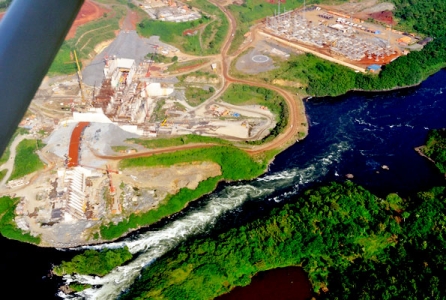Bujagali power project on course - 2010-08-31
On August 21, 2007 President Yoweri Museveni and the Aga Khan, Prince Karim al-Hussaini, the spiritual leader of the Ismaili Muslims, laid the foundation stone for the Bujagali hydropower dam on the River Nile in a show of commitment to address Uganda’s energy deficit.
The 250 MW project, co-financed by the World Bank Group, is a major component of Uganda’s answer to the electricity supply gap that in recent years has made rolling blackouts a daily reality for Uganda’s residents, businesses and services.
Many Ugandans have kept on pondering as to when the project will be ready. However, the green light seems to be flashing.
The Bujagali Hydro-power Project will produce its maiden 50 megawatts after the completion of the first phase between August and September next year, the Project Director of Bujagali Energy Limited told Business Power last week.
Mr Glenn Gaydar told Business Power that the project is on course but before the other phases are rolled out, the success of the first phase must be evident.
“Between August and September next year we will have the first phase (with 50 megawatts) complete,” Mr Gaydar said adding: “We will then test it and see how it goes and another one will follow.”
The $860m project, which will generate 250 megawatts of electricity and ultimately bring an end to the rampant load shedding, has so far been the country’s biggest project. This project is expected to be complete by 2012.
It is anticipated that once commissioned in 2012, the 250 megawatt, run-of-the-river hydropower plant on the Victoria Nile, will re-use water flowing from two existing upstream facilities to generate electricity.
The additional power will increase supply to the national grid at the lowest cost compared to other power generation expansion options under Uganda’s energy sector strategy.
Continued shortage of electricity threatens Uganda’s macroeconomic performance. Only five per cent of the population has access to electricity, making it one of the lowest per capita energy consumption rates in the world.
Hospitals, schools, businesses, and residences suffer load shedding caused by these shortages, which have stunted Uganda’s economic growth by an estimated one per cent of the country’s gross domestic product.
To alleviate the energy shortage, Uganda has had to rely on thermal power, a more expensive source of energy generation that, in part, caused a significant increase in the price of electricity by roughly 100 per cent in 2006.
To improve on power supply, Uganda devised a strategy aimed at promoting an efficient power sector, one that would offer an increased role to the private sector for future development, provide adequate, reliable and least-cost power generation capacity to meet the population’s demand and increase the percentage of rural households with direct access to electricity in an effort to help revitalise rural development.
The country passed and implemented a new Electricity Act and established the Electricity Regulatory Authority; unbundled the state-owned electricity company into generation, transmission, and distribution agencies; conceded generation and distribution facilities to the private sector; established a Rural Electrification Agency and approved the establishment of a credit facility to support energy investments in rural areas.
The expected outcome of the Bujgali power project will also result into increased supply of improved air quality and jobs for Ugandans (app. 2,000 jobs at the peak of construction).
The executer of the project - Bujagali Energy Limited - is a consortium of American Sithe Global, Kenyan Industrial Promotion Services (IPS) and the Uganda government. IPS is an affiliate of the Aga Khan Fund for Economic Development.
The consortium put $190 million into the project while the rest are loans, mainly from the World Bank Group, the European Investment Bank and the African Development Bank.
- 6217 reads
 Ismaili.NET - Heritage F.I.E.L.D.
Ismaili.NET - Heritage F.I.E.L.D.